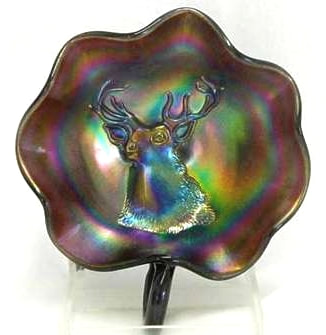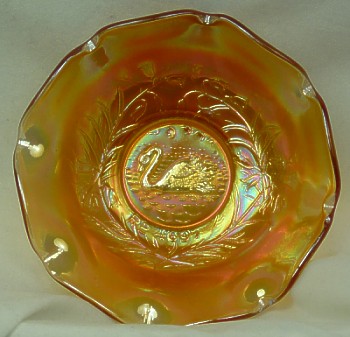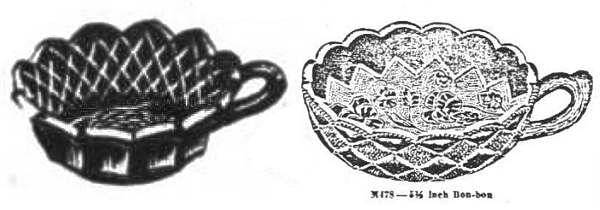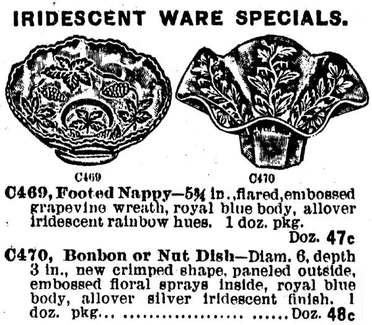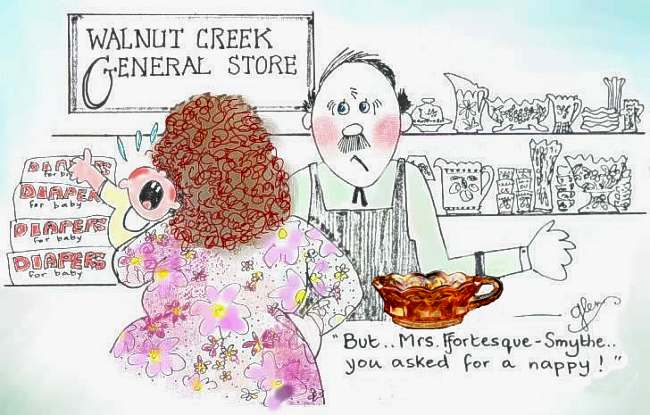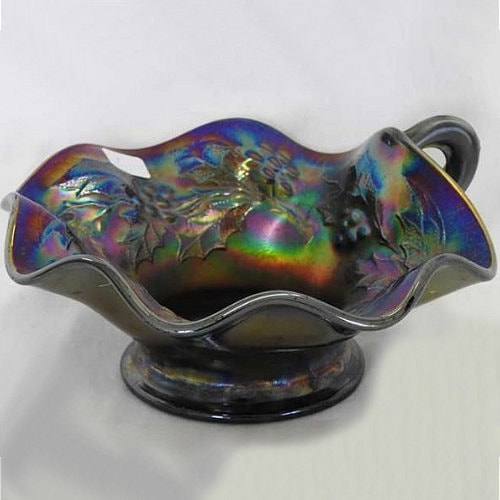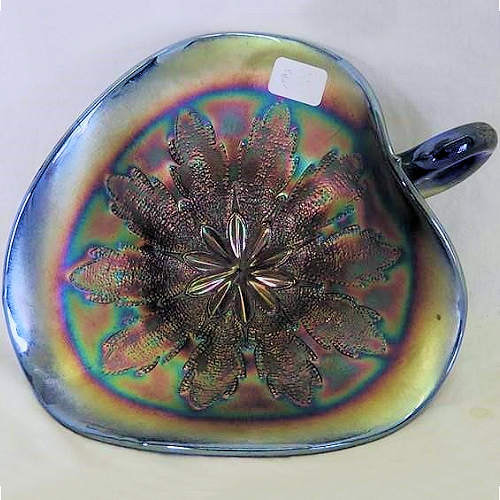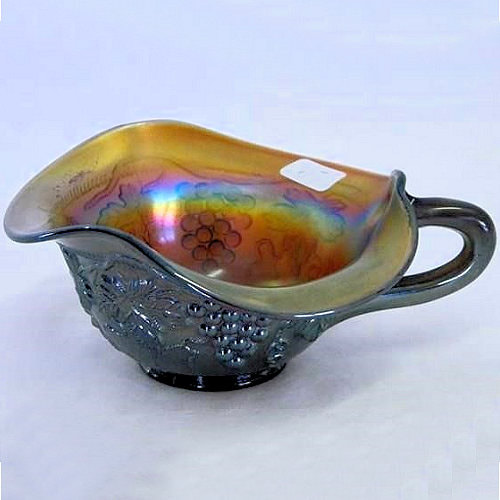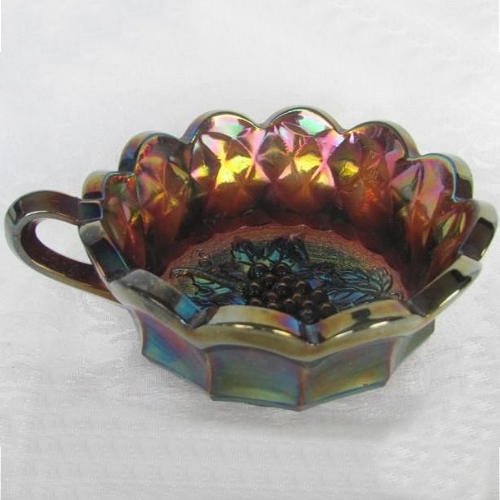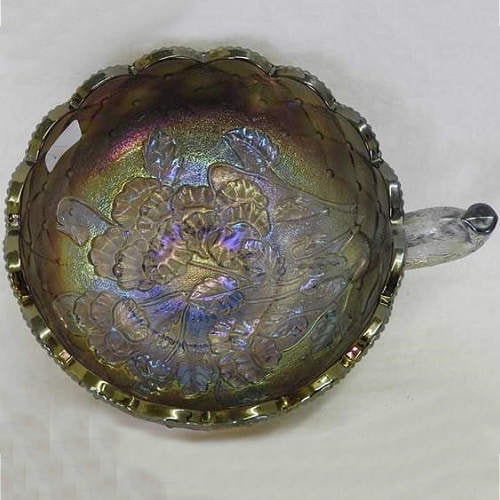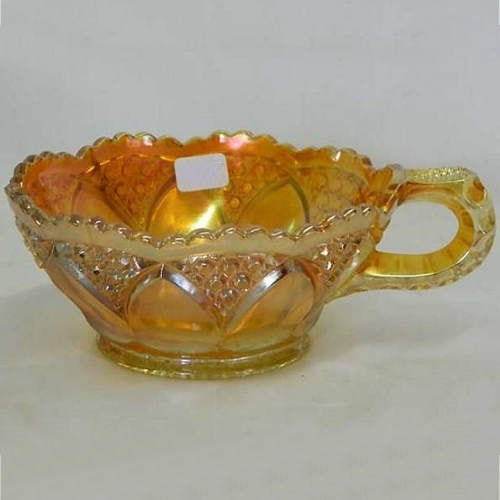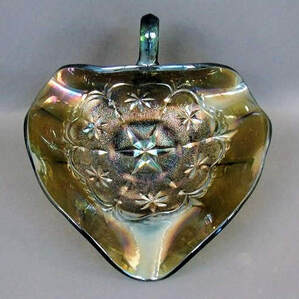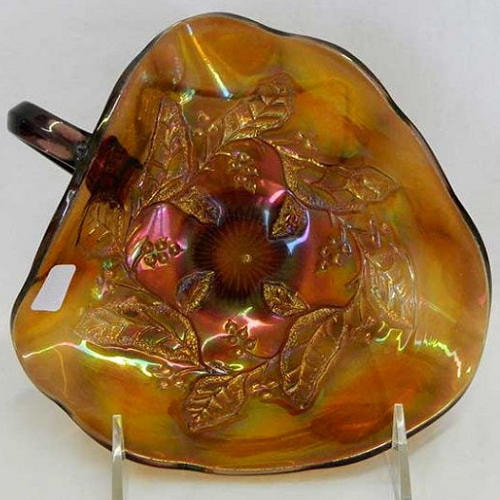What exactly is a "Nappy"?
S&G Thistlewood. Originally presented in NetworK #26, July 2017
The answer is not as simple as it may seem. Probably the most widely held belief is that a nappy (and we are talking about Carnival Glass, of course) is a small dish with a handle. Just one handle. If it has two handles, it’s a bonbon (or a card tray, but let’s not go down that road just yet – we’ll “handle” that puzzle another day). A nappy can be round, ruffled, or even heart or spade shaped, but the defining feature is that it has one handle.
The Elks piece illustrated below left is a good example of the nappy shape. It is a rare purple Elks nappy made by Dugan. Courtesy of Seeck Auctions.
But when these pieces were originally made they were not called nappies – in fact back in those early days, a nappy did not have a handle! Originally, a nappy was a simple, round shaped bowl, also called a sauce or even a berry bowl. That reflects the origins of the word “nappy” which was derived from various words meaning a rimless, small, open bowl (nap or knapf). In fact, Australian Carnival collectors maintain the original meaning today, using the word “nappy” for small berry bowls, such as the marigold Swan / Australian Swan item shown below on the right, made by Crown Crystal.
So what were the pieces with one handle called back in the early days?
|
They were called olive dish, handled bon-bon or handled berry.
The Heavy Grape one-handled piece, below left, was called an “olive” dish in Imperial’s 1915 catalogue, and in their 1925 catalogue, they described the handled Pansy piece on the right, as a bon-bon. Today, many collectors refer to the shape as a nappy. To add to the "nappy" debate here is an ad from a 1912 Butler Bothers catalogue. The item on the left (C469), which is Fenton's Vintage, was called a nappy, but there is no handle to be seen! The item on the right (C470) is Fenton's Pepper Plant, described as a bonbon or nut dish, but today, collectors call it a "hat shape"!
|
|
Naturally, collectors find it convenient to give names to specific shapes, and hence today's generally accepted use of "nappy" for these small one-handled pieces. However, when they were originally made, a whole variety of names was used, often for the same shape. The makers' intention was, of course, to give as many ideas as possible for the uses to which a particular item could be put - and ultimately, to increase sales. And if we want to complicate matters further, meanings of certain words are different around the world. In the UK a nappy is what would be called a diaper in the USA! In the British supermarket you’d find nappies in the Baby section. So, let’s sum it all up for clarity. Carnival collectors today usually use the term “nappy” to mean a small dish with one handle. Carnival collectors (especially in Australia) also use the term “nappy” to mean a small berry dish. But be careful of using the term “nappy” in the UK as you might get more than you bargained for! |
Nappies on Parade!
Here is a selection of one-handled nappies.
Here is a selection of one-handled nappies.
Above (left to right): Holly and Berry, in purple by Dugan; Leaf Rays, in blue by Dugan; Grape and Cable in green by Northwood (from the punch cup mould). All courtesy of Seeck Auctions.
Above (left to right): Imperial Grape in purple. Courtesy of Burns Auctions; Pansy in smoke by Imperial and Tulip and Cane in marigold by Imperial, both are courtesy of Seeck Auctions.
|
Above: two Millersburg nappies. Left is a rare Night Stars in olive green (courtesy of Burns Auctions) and right is a Holly Whirl in amethyst (courtesy of Seeck Auctions).
|
